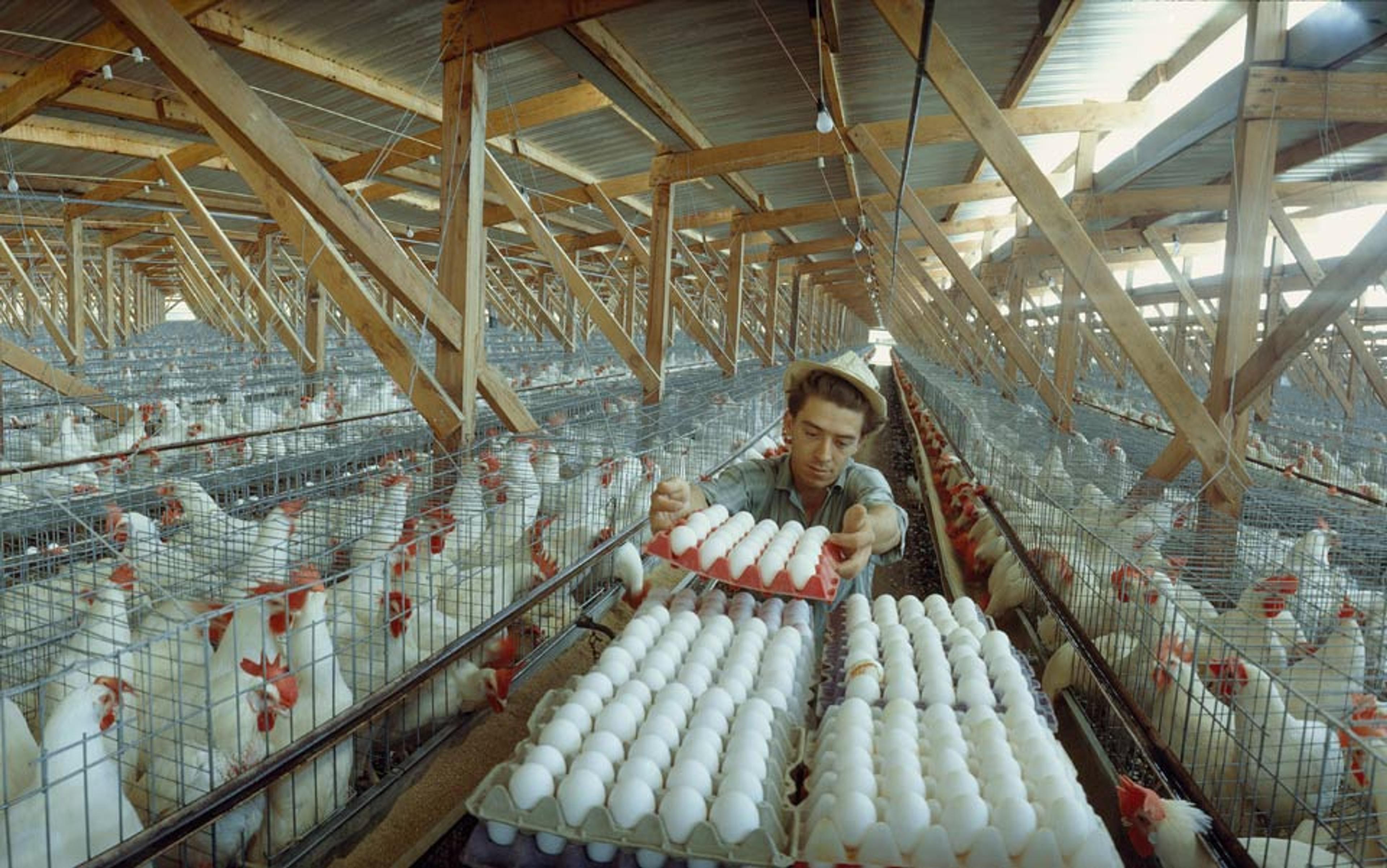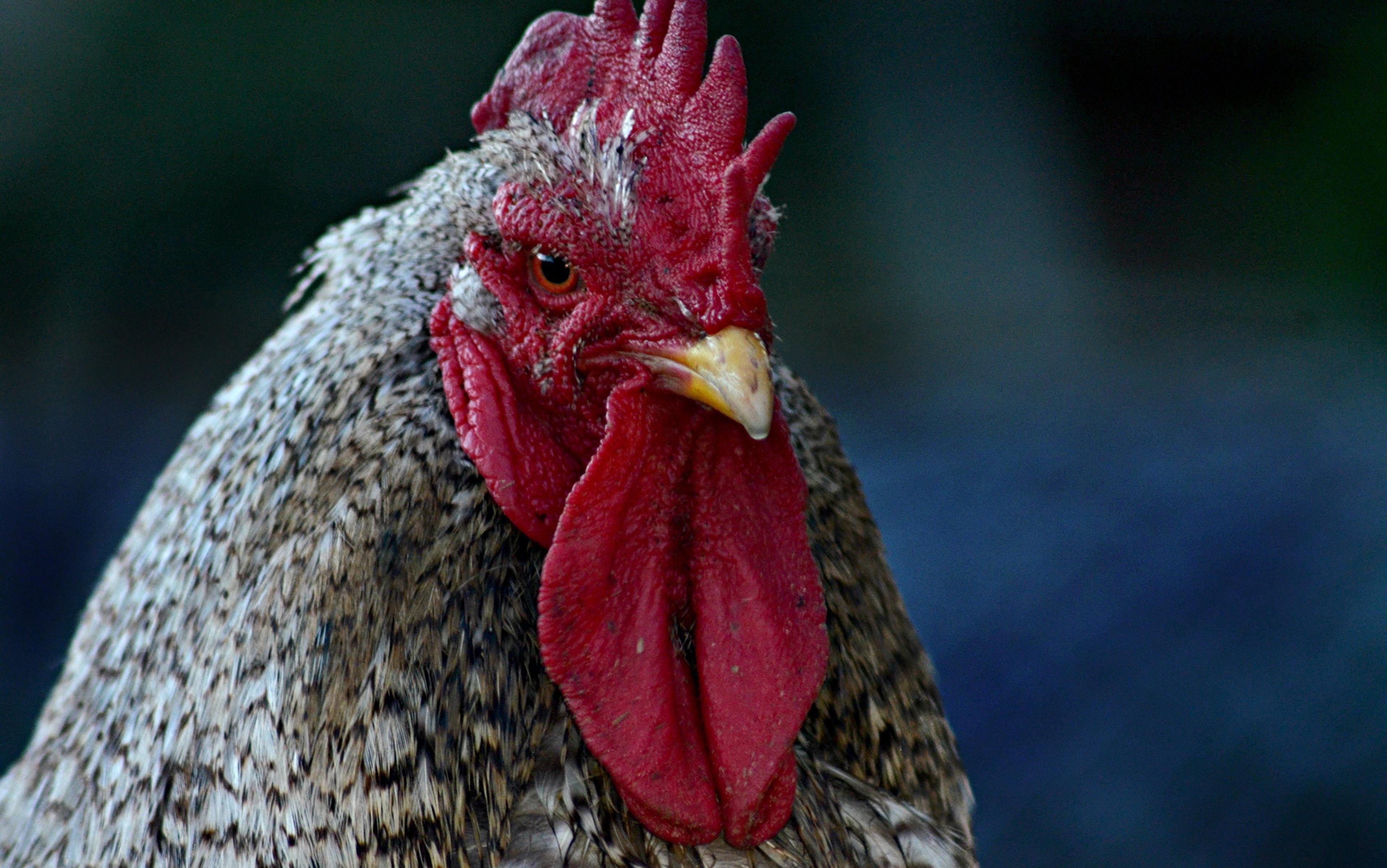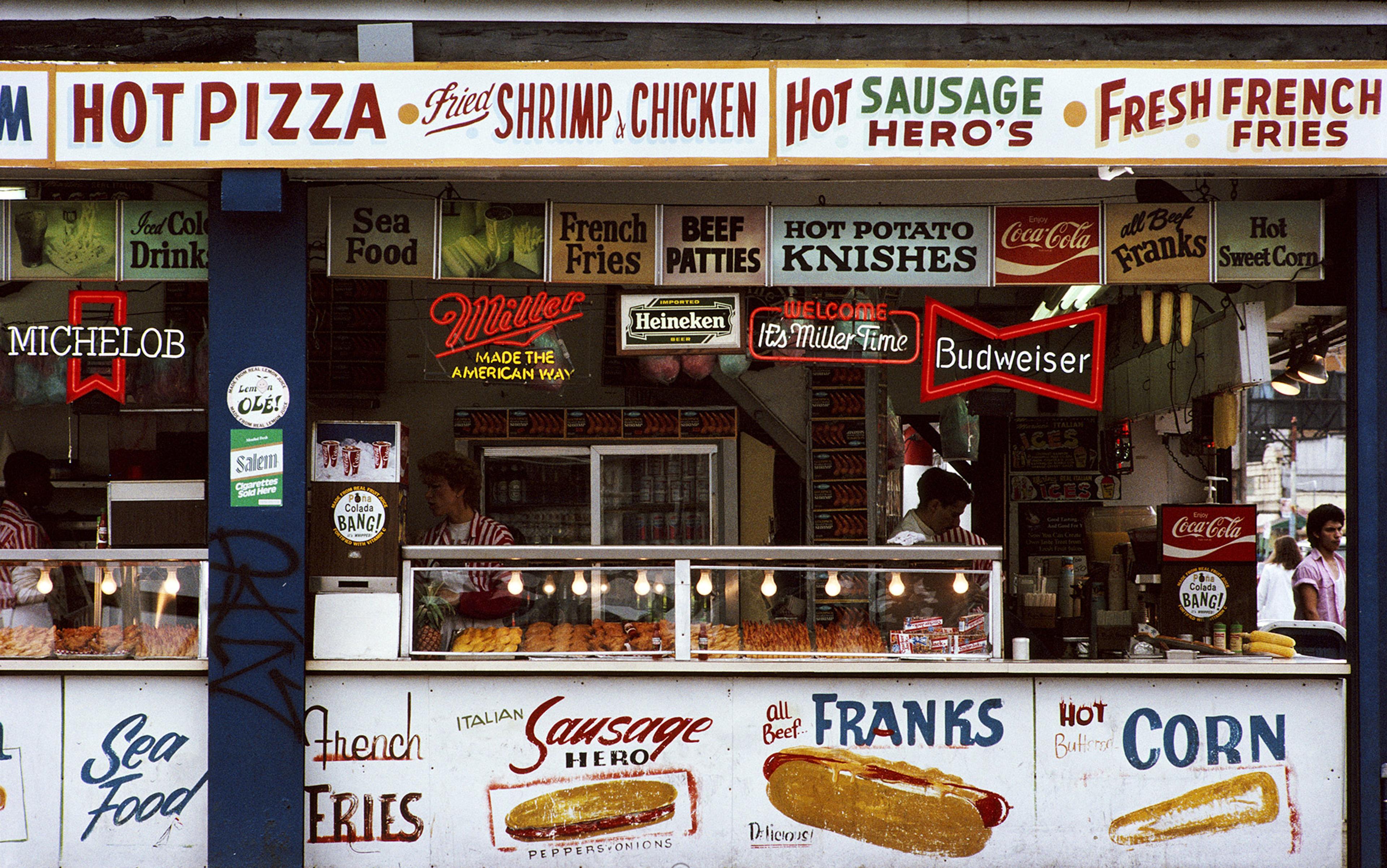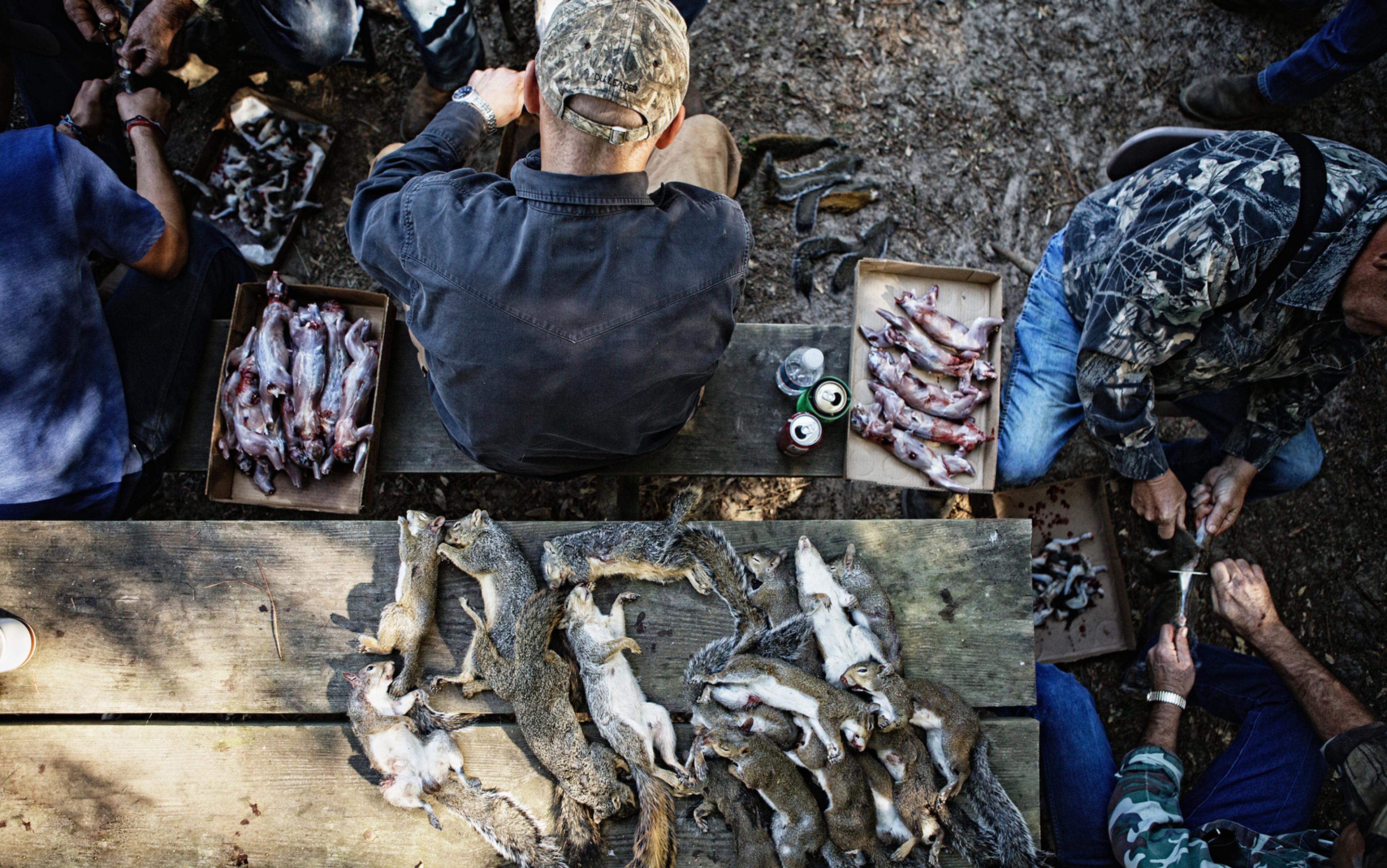Among African Americans across the South, the pastor had first dibs on the bird that typically graced the table after church. ‘He ate the biggest, brownest, and best parts of the chicken at every Sunday meal,’ complained Maya Angelou of the pious glutton Reverend Howard Thomas in her memoir I Know Why the Caged Bird Sings (1969). Often called the preacher’s bird or the gospel fowl, it had a sacred role among West Africans, slaves and their descendants who laid the foundation for America’s love affair with chicken.
British settlers brought their flocks to Jamestown in 1607, a dozen years before the first African slaves arrived on Virginia’s shores, and the birds helped to sustain struggling colonists. Food grew so short in 1610 that the governor made the unauthorised killing of any domesticated animal, including cocks and hens, punishable by death. In New England, where chickens arrived on the Mayflower, the Separatist Edward Winslow in 1623 sent an ailing Native American chief two chickens to make a healing soup. Grateful for the exotic gift, the chief is said to have revealed a plot by another tribe to destroy the nascent colony.
The bird, however, was rarely more than an incidental food in colonial America. On Winslow’s farm, wild bird remains excavated by archaeologists outnumber those of chickens three to one, and cattle, pig, sheep and goat bones dominate. Virginians, meanwhile, feasted on turkey, goose, pigeon, partridge and duck, along with venison, mutton, pork and beef, as well as shad, sturgeon and shellfish.
‘Seventeenth- and 18th-century descriptions of colonial foodways ignored the chicken for the most part,’ says the Oxford Encyclopedia of Food and Drink in America (2004), edited by Andrew Smith.
For enslaved African Americans, this humble status proved a welcome boon. In 1692, after several individuals had bought their freedom with profits from animal sales, the Virginia General Assembly made it illegal for slaves to own horses, cattle and pigs. Masters often banned their human chattels from hunting, fishing or growing tobacco, and at Mount Vernon raising ducks and geese was an undertaking reserved solely for George Washington’s white staff. The chicken ‘is the only pleasure allowed to Negroes; they are not permitted to keep either ducks or geese or pigs’, one visitor there remarked.
On the expanding farms of the colonial South, African Americans began to breed, sell, buy and eat fowl as they saw fit. Many first-generation slaves came from West Africa, where the birds were widely raised and often used in ritual sacrifice. Chicken fried in palm oil is still a favourite meal there. Owners granted slaves authority over chickens because the birds were of negligible economic importance and reduced plantation spending on feeding field hands. Just as European Jews gained expertise in moneylending, a profession disdained by Christians, poultry became an African-American speciality because whites preferred beef and pork. Planters often paid their slaves cash for fowl and eggs, giving black cooks an economic incentive to encourage their masters to eat more chicken. By the middle of the 19th century, fried chicken was a quintessentially Southern dish.
On the eve of the Civil War, exotic fowl arrived from China and Indonesia, and these large and flamboyant chickens became fashionable to collect and breed. They were crossed with domesticated birds and, by the 1870s, new varieties emerged that produced more eggs and meat. This development coincided with the rapid growth of cities in the northern United States, and the rising demand for cheap protein to feed millions of factory workers.
The First World War pushed the chicken from the backyards of US farms to the forefront of the war effort. Herbert Hoover, head of the effort to feed American troops and desperate European civilians, encouraged US citizens to raise birds so that domestic pork and beef could be sent to the boys over there. By 1918, the post office allowed chicks to be shipped via Express Mail, spurring the growth of a hatchery industry that provided egg-laying birds to farmers around the nation. Five years later, in a little town in Delaware, a housewife named Celia Steele ordered 50 chicks from a hatchery through the mail, and by mistake received 500. She housed them in a small building until they were large, and then sold them to Jewish markets in New York City. The broiler industry was born, centred on the Delmarva Peninsula that includes Delaware, Maryland and Virginia, and serving what was the world’s largest urban area. In 1928, the Republican National Committee put out an ad backing Hoover as the presidential candidate, promising ‘A Chicken for Every Pot’.
It wasn’t until the Second World War, when President Franklin Roosevelt’s War Food Administration seized all the broilers on Delmarva for recuperating veterans, that demand truly soared. By the time the war ended, people in the US were eating nearly three times as much chicken as they had at the start.
Poultry entrepreneurs feared calamity in a postwar world where beef and pork were no longer rationed. So at an industry meeting in Canada, Howard Pierce, an Iowa poultry scientist working for the country’s largest food retailer, A&P, proposed a kind of Manhattan Project for poultry called the Chicken of Tomorrow. He suggested creating a chicken that looked like a turkey, with a broader and thicker breast and meatier thighs and drumsticks, and established the National Chicken of Tomorrow Committee, comprising all the major US poultry organisations, two trade publications, and employees of the US Department of Agriculture, to lead the work.
The goal was to create the ideal broiler, with ‘breast meat so thick you can carve it into steaks’
These poultry authorities – all white and all male – created a scoring system, wax models with rounded breasts, and strict rules for a national contest. The goal was to draw on the expertise of small farmers as well as large commercial breeders to create the ideal broiler, with ‘breast meat so thick you can carve it into steaks’. Given the relatively scrawny fowl of yesterday, this was a formidable objective.
To drum up interest, A&P paid for a short movie narrated by Lowell Thomas, the nation’s most famous newsreel reporter, full of serious men in ties and white coats examining chickens while women and black people in the background go about more menial tasks, such as feeding and dressing the birds. Given the old emphasis on egg production, ‘relatively few poultrymen took steps to develop better meat-type chickens’, Thomas explained. The committee also co-sponsored a Chicken Booster Day which included a New York City banquet and a screening of the 20th Century Fox film Chicken Every Sunday (1949), starring Celeste Holm and a child actress named Natalie Wood. The real star, of course, was the reassuring meal that brought a broken family back together without breaking the bank. The bird that provided three seasons of eggs, pin money for rural women, and the occasional special dinner was recast as a serious competitor to beef and pork.
Contests in 42 US states for the Chicken of Tomorrow led to regional finals and two national competitions, one in 1948 and the last in 1951. Fertilised eggs from contestants’ birds were hatched under the same conditions, fed the same food, and given the same vaccinations. Then they were weighed, slaughtered and dressed. Judges, recruited from universities, industry and governments, gave points for ‘economy of production’ and ‘dressed carcass’. Just as the Manhattan Project brought together university scientists, industrial engineers and government administrators to unlock the secrets of the atom, the Chicken of Tomorrow project drew on thousands of poultry researchers, farmers and agriculture extension agents to fashion a new high-tech device.
On a sunny June day in 1951, 8,000 chicken fans filled the Razorback Stadium at the University of Arkansas in Fayetteville in the culmination of a nationwide effort to create the fowl of the future. As a band played and the crowd cheered, the US vice president Alben Barkley handed a California farmer named Charles Vantress a $5,000 cheque for his winning entry.
The Chicken of Tomorrow award marked the rise of a vast new industry and the metamorphosis of the backyard bird into a technological wonder akin to missiles, the transistor and the thermonuclear weapon, which had been tested for the first time six weeks earlier. The winning bird was chosen not for its exotic stature or pure breeding but for its similarity to a wax model of the perfect carcass as devised by a team of poultry scientists. The grilled chicken in your sandwich or wrap comes from a descendant of the bird that Vantress created by crossing California Cornish males with New Hampshire females.
This hardy bird with just the right mix of European and Asian genes weighed an average of more than four pounds, twice the size of a typical barnyard chicken of the day. The speed with which it became the industry norm is astonishing. Within a few years, most commercial broilers came from this stock. A 1951 issue of the Arkansas Agriculturalist declared that ‘the day of the slick-hipped chick is over’ thanks to ‘the leaders of the Chicken-of-Tomorrow program’. Newspapers hailed the scientifically engineered birds as ‘these sweater girls of the barnyard’.
Barnyards were relics of the past in the brave new world of the postwar poultry industry. So, too, was the spectrum of unique taste that made chicken meat and eggs vary according to breed and region. Modern chickens lived indoors, ate processed feed from automated bins, consumed a host of vitamins, breathed ventilated air, and were protected from illness by vaccinations and antibiotics. The goal was to convert feed into meat as efficiently and cheaply as possible. This scientific approach worked. While beef and pork prices shot up in the decade after the Second World War, chicken prices fell dramatically. In the new system, farmers were contractors. The company owned the hatcheries and the slaughterhouses, as well as the birds themselves, and provided the feed and medicine. The grower raised the chickens in their own coops – now long and low warehouses – until they reached their full size and were ready for shipping.
Until the early 1950s, most US flocks contained no more than 200 chickens, about the size advocated by ancient Roman agricultural writers 2,000 years earlier. In the wake of the Chicken of Tomorrow contest, farms raised tens of thousands of birds, some as many as 100,000. A hen that might live a dozen years on a farm could now be fattened and slaughtered in six brief weeks.
There had been nothing like this in human history. There is no record of any other major food – meat, dairy, grains, fruits or vegetables – expanding so quickly in volume and scale. The only exception might be orange-juice concentrate, which, thanks to scientific tinkering and clever advertising, expanded rapidly in this same period. Advances in nutrition and breeding techniques made it possible to grow a bird in half the time of 1940, while the price per pound plummeted from 65 cents to 29.
By providing feed and water to the birds – a novelty at the time – Tyson could transport them over longer distances
What made chickens different from, say, cows? With a long, entrenched history, ranchers were slow to embrace academic genetics and corporate methods, and were generally suspicious of radical change. By contrast, a rising generation of poultry magnates happily drew on the extensive research by scientists on chicken genetics to create a more efficient product.
Most of these new chicken magnates were not farmers but the middlemen who shuttled birds from farm to city. John Tyson, for example, founder of the nation’s largest poultry company in Arkansas, now the world’s largest meat producer, began as an independent trucker. Barely scraping by in the early days of the Depression, he started hauling broilers to Kansas City, St Louis and Chicago. By providing feed and water to the birds – a novelty at the time – he could transport them over longer distances. During the Second World War, as demand for chicken rocketed, Tyson bought up hatcheries and feed factories as well as broiler houses from failed growers, pioneering the vertical integration model that is at the heart of today’s modern business.
As chickens were concentrated in huge numbers, disease could sweep through and wipe out whole flocks, while feed prices could fluctuate wildly. Only the largest operations survived and thrived, and Tyson earned a reputation as a smart and hard-nosed entrepreneur apt to fly into rages. He was not sentimental about poultry. ‘Just keep it simple,’ said his son Don, who studied agricultural nutrition at the University of Arkansas before joining the company as general manager in 1952. ‘Kill the chickens, sell ’em, and make some money.’ The father-and-son team drew on the latest science in feed, genetics and management to expand their operations: vitamins, vaccines and antibiotics became essential elements of success through the 1950s. The fact that the product was chicken was almost incidental. ‘We’re not committed to the broiler business as such,’ Don later told one interviewer. ‘We’re committed to so many dollars invested on dollar returned on that investment.’
In the new order, older varieties began to vanish. Just as car manufacturers required uniform parts, these new industrialists wanted a bird that matured quickly using as little feed and with as little variation as possible. So the new generation of scientific breeders focused on creating the most uniform bird possible. To do this, growers increasingly grew dependent on companies to provide the latest model. By 1960, 95 per cent of Arkansas growers were under contract with major corporations such as Tyson. While they muttered about their status as modern-day sharecroppers, public complaints could lead to cancellation of those contracts and immediate bankruptcy.
Attempts by growers and poultry-plant workers to organise themselves into unions never went very far in the Midwest or South. After all, the thriving poultry industry brought jobs to some of the country’s poorest regions, from Arkansas’s Ozarks to the hills of north Georgia. Friends in Washington ensured minimal federal oversight. The Arkansas senator J William Fulbright became the industry’s vocal supporter in Congress. When a bill to tighten inspections was under consideration, Don Tyson wrote a brief note to Fulbright: ‘Bill, this would hurt the chicken business.’ The proposed legislation swiftly died.
Soon chicken was cheaper than beef or pork, and available neatly packaged according to cut. Picking out pin feathers, removing the guts, and chopping the feet off chickens had long been a laborious chore for housewives in cities as well as the country. Now they did not have to buy an entire chicken, which made the bird more popular for meals beyond just an elaborate Sunday dinner. And as people became more conscious of the dangers of fat in red meat, the low-fat bird became a more appealing choice.
Tyson’s $10 million in net sales in 1960 topped $60 million by the end of the decade, reflecting that shift in consumer tastes. The actual number of broiler chickens in the US at any one time remained remarkably stable after the start of the Second World War. But each bird weighed twice as much and required half the feed and half the time to mature.
More than half of the nation’s 250,000 poultry workers are women, 50 per cent are Latino, and an estimated one in five is an illegal immigrant
Falling prices and thin profit margins, however, left the industry scrambling to come up with ever-new ways to sell its prosaic product, from frozen dinners to precooked army rations. Hungry markets opened up overseas. Tyson, like other major poultry operations, began to spread its product as well as its plants and way of doing business to Mexico, Europe, Asia and South America. Upstart businessmen such as Frank Perdue on the Delmarva Peninsula pioneered advertising campaigns that branded chickens (even though broilers across the country are nearly identical), a marketing ploy that the beef industry has yet to copy successfully.
Perdue also rebranded the poultry business as masculine, after it had been long disdained as women’s work. ‘It takes a tough man to make a tender chicken,’ he told television audiences in the 1970s, a century after the industry had taken its first halting steps. It also still takes women and minorities behind the scenes. More than half of the nation’s 250,000 poultry workers are women, 50 per cent are Latino, and an estimated one in five is an illegal immigrant. It is often ugly, low-paid and dangerous work, as is well-documented in newspaper articles, government reports and books by writers who worked undercover in poultry plants. Yet it makes cheap chicken widely available for consumers, including those who wait for sales on boneless breasts to stock their freezers. But US ways of processing chickens, particularly the use of chlorine to clean carcasses, led the European Union to ban US imports.
Fifty years after the Chicken of Tomorrow contest, chicken overtook beef as the meat of choice in the US. The introduction of McDonald’s Chicken McNuggets and other highly processed poultry – tenders, patties, hot dogs – helped push the bird over the top. Food scientists discovered that the meat, like the bird of old, was infinitely versatile, absorbing flavours more readily than pork or beef, and perfectly suited for fast food. By 2001, the average person in the US ate more than 80lb of chicken a year, quadruple the 1950 amount.
The figure is now close to 100lb. In 2012, Tyson recorded more than $33 billion in sales, and its weekly production topped 41 million chickens in 60 plants. The broiler business is booming in the US and abroad. The vertical integration model pioneered by Tyson has spread to rapidly urbanising South America, India and China, and now the cattle and pork industries are rushing to copy the approach. Once ignored and despised by many in the farm sector, poultry is now an international multibillion-dollar complex that is setting the pace for the world’s agribusiness.
In Fayetteville, just off the Fulbright Expressway, a historical marker stands on the campus of the University of Arkansas near the site of the final contest for the Chicken of Tomorrow. The sign commemorates the ‘entrepreneurs who built Arkansas’ poultry industry into a major force in the world economy’. The marker near Razorback Stadium stands on Maple Street at the entrance of the John W Tyson Building, an impressive modern complex of 100 laboratories, a 10,000-square-foot pilot processing plant, a host of classrooms and, as its brochure notes, ‘tasting booths for sensory evaluation’. Funded by the federal government, poultry companies and a state bond approved by public referendum, it is modern and clean, a $20 million concrete-and-steel monument to the success of science and industry. There’s not a live chicken in sight.
From ‘Why Did the Chicken Cross the World?: The Epic Saga of the Bird That Powers Civilisation’ by Andrew Lawler. Copyright © 2014 by Andrew Lawler. Published by Atria Books, a Division of Simon & Schuster, Inc. Reprinted by permission.






